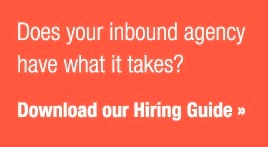 Inbound marketing is re-writing the rules of how businesses promote their brand, generate leads, and retain customers. But is this exciting new phenomenon passing your team by? Are things just not clicking? Are you just not seeing the return on your investment? If so, it may be time to repair your broken inbound marketing strategy. Here's how to do it.
Inbound marketing is re-writing the rules of how businesses promote their brand, generate leads, and retain customers. But is this exciting new phenomenon passing your team by? Are things just not clicking? Are you just not seeing the return on your investment? If so, it may be time to repair your broken inbound marketing strategy. Here's how to do it.
First off, it's important to understand that your inbound marketing strategy must be predicated on a set of core principles. If you get these core, foundational components right, you'll see positive outcomes. If you don't, however, the strategy is doomed from the start. What, exactly, are these foundational principles?
The first, and most important, is a pipeline of strong and compelling content. After all, inbound marketing is predicated on the idea of publishing content that in turn attracts leads. Therefore, do an inventory of your team's ability to create content. Key inputs include:
- A blog that publishes 500-750 word posts at least three times a week, carefully balancing educational content with more commercially oriented posts.
- Blog posts with compelling titles.
- Subscription to tools like Google Alert to eradicate writer's block.
- A formal editorial calendar.
- Original content like FAQs and white papers.
- In-house writers. If not, it may be time to partner with a blogging agency.
Of course, this content will only be compelling if it actually resonates with the reader. Therefore, revisit another foundational component of your inbound marketing strategy — your buyer personas. Are they outdated? What kind of content speaks to them? What are the obstacles to conversion?
During this exercise you'll also need to revisit what kind of content should map with the lead's location in the purchasing funnel. It's possible that your team may be pushing irrelevant or misaligned content. Make sure leads at the top of the funnel are given content that educates them around both your products and your brand. If they're towards the bottom of the funnel, push them to convert with offers like free consultation.
You'll also need to take a closer look at your social media strategy and how it interfaces with your inbound marketing approach. Is your brand on the networks that are best attuned to your buyer personas? Are you consistently looking to boost engagement with followers? Are you sharing your content on these networks? To answer some of these questions, take a closer look at analytics on each network.
Lastly, revisit some of the other elements of your strategy like landing pages and CTAs, responsive and mobile-friendly web design, SEO, email marketing and display and social media advertising. Pull up with your team and gauge your collective effectiveness along these roles. If there are gaps, determine if it’s easier to fill them with in-house resources or instead, work with an inbound marketing agency.
So what's your take on all this? How do you know when an inbound marketing strategy is broken? How do you know when it's time to look to help from an agency?
Considering a partnership with a third-party agency? Do your due diligence and download our Hiring an Inbound Marketing Agency eBook.






